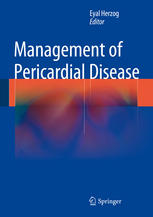

Most ebook files are in PDF format, so you can easily read them using various software such as Foxit Reader or directly on the Google Chrome browser.
Some ebook files are released by publishers in other formats such as .awz, .mobi, .epub, .fb2, etc. You may need to install specific software to read these formats on mobile/PC, such as Calibre.
Please read the tutorial at this link: https://ebookbell.com/faq
We offer FREE conversion to the popular formats you request; however, this may take some time. Therefore, right after payment, please email us, and we will try to provide the service as quickly as possible.
For some exceptional file formats or broken links (if any), please refrain from opening any disputes. Instead, email us first, and we will try to assist within a maximum of 6 hours.
EbookBell Team

4.1
90 reviewsPericardial disease is a broad term that describes a wide range of pathologies. The clinical aspects of pericardial disease encompass acute pericarditis, pericardial tamponade, pericardial effusion, constrictive pericarditis, and effusive-constrictive pericarditis. Those disorders differ not only in clinical presentation but also in the timeline of disease development; for example, pericardial tamponade is commonly an acute, life-threatening event, whereas constrictive pericarditis is a chronic process developing over months to years. Therefore, pericardial disease management is challenging for most clinicians. The evidence base in the field is relatively scarce compared with other disease entities in cardiology. European Society of Cardiology released guidelines for the diagnosis and management of pericardial diseases. Currently there are no guidelines from American cardiology societies to help clinicians in dealing with pericardial disease. In this book, my goal is to provide extensive review of pericardial disease evaluation and management. A unified, stepwise pathway-based approach for the management of pericardial disease is provided at the end of the book.